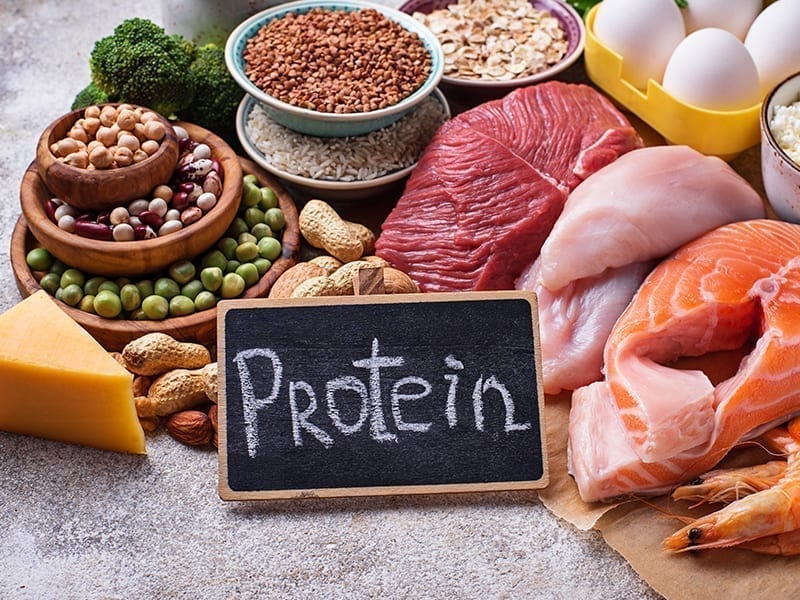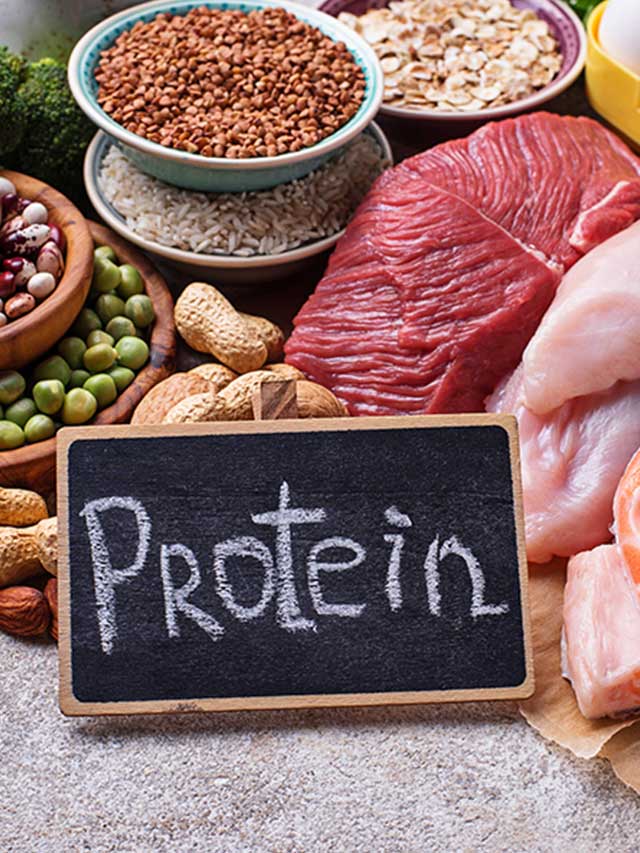Nutrition is one of the key pillars of sound physical health, cognitive abilities and most importantly, immunity. Today, in the midst of a global pandemic, most of us are scrambling to amp-up our immunity by getting our dose of nutrients through supplements, whole foods, ayurvedic concoctions, and the like. And while this knee-jerk reaction is all part and parcel of human nature, the pandemic is also a wake-up call that’s alerting us to invest in long-term and sustainable nutrition for our health.
As Indians, with roti, rice and vegetables being the largest part of the Indian thali, we get a good dose of carbohydrates, fibre and minerals from our meals. What we do lack, or need more of, is an adequate portion of protein for the day, which actually appears in our thali in a small quantity through dals, rajma, chole (lentils and beans). The occasional paneer, chicken and egg are usually considered a treat, even though they are quality sources of protein.
An ongoing campaign, the Right To Protein Initiative is a national public health advocacy drive centred around protein education and awareness. For the past year, Right To Protein has been assessing the existing challenges related to protein consumption in India, marked by the launch of Protein-O-Meter as well as the launch of India’s first Protein Day on February 27, 2020. They have recently developed a market study with over 2,000 mothers across 16 Indian cities with research firm Nielsen called, the Protein Paradox Study.
Did You Know?
Protein deficiency in India is more prevalent that it is known, with nearly 73% of urban Indians being protein deficient and about 93% are unaware about their daily protein requirements (IMRB 2017).
5 Reasons Every Woman Needs Protein

Indians indulge in a carb-friendly diet and have been doing so for centuries. In India, people consume starchy diets which are rich in carbohydrates which constitutes approximately 70-80% of their diet. Comparatively, protein is consumed less than what the body needs. In women, sufficient protein can help in a host of ways:
- To gain and maintain lean muscle mass, because unlike men, our hormones aren’t designed to bulk up and we lose muscle mass and gain unhealthy fat much more easily.
- Get healthy hair, skin and nails, as these are made up of protein.
- Feeling satiated for longer to avoid overeating and staying energised for long periods because carbohydrates, especially those that cause a spike in blood sugar, provide spurts of energy. Protein is a slow, sustainably releasing source that won’t trigger insulin highs and lows.
- Make bones stronger and boost bone volume. Protein makes up half of your bone volume; it’s the meat inside your bones. In addition to calcium, protein is very important for bone health.
- Provide a healthy supply of breastmilk in lactating mothers. Protein helps with growth, maintenance and repair of cells. Your baby relies on you for their protein needs, which is why new moms need to increase their protein intake. It supports your health and nourishes the baby simultaneously.
“To understand why protein isn’t finding its place in the shopping carts of most Indian households, the Right to Protein initiative reached out to 2,142 Indian mothers, the primary decision-makers of a household’s nutrition intake, across 16 cities in India for a survey conducted by commissioned research agency, Nielsen. The results of this study, titled the Protein Paradox study, highlighted that there exists a strong sense of confusion about protein among mothers, which seems to indicate that misinformation and misattribution are the driving forces of protein deficiency in Indian households.”
Common Signs Of Protein Deficiency
- Skin, hair and nail problems
- Loss of muscle mass
- Bigger appetite and increased calorie intake
- Oedema (swollen and puffy skin)
- Fatty liver
- Greater risk of bone fractures
Get More Protein From Your Indian Diet
Your daily meals consisting of roti, dal, rice does not provide enough protein. While most mothers try including protein-rich foods like dal and pulses, eggs and nuts like almonds, there are other sources with a high protein content that you can add to your meals. These include milk, green leafy vegetables, fruits, seeds, and curd (dahi). Here are some extremely important sources of plant and animal protein:
Non-Vegetarian:
- Seafood
- Pork
- Chicken
- Mutton
- Lamb
- Egg
Vegetarian:
- Quinoa
- Oats
- Millets
- Tofu
- Cheese
- Peanut Butter
- Paneer
- Mushrooms
Greens:
- Spinach
- Broccoli
- Asparagus
- Chinese cabbage
- Green peas
- Beans
Nuts & Seeds:
- Almonds
- Peanuts
- Pumpkin seeds
- Sesame seeds
- Pistachios
- Cashews
- Chia seeds
- Flax seeds
- Sunflower seeds
Did You Know?
A 2019 study published by EAT-Lancet discovered that Indians on an average eat more simple carbohydrates (rice and flour), less complex carbohydrates, less protein (both animal and plant-based) and less fruit and vegetables.
Protein-Rich Meal Plan You Can Follow
| Breakfast | One helping of dal dosa or chila Or a bowl of dahi Or one glass of smoothie |
| Mid-Morning Snack | Egg whites Or one glass of chaas Or one helping of fresh cheese |
| Lunch | Cooked lean meat like chicken or fish Or a cheese mushroom omelette made of one/two eggs Or one helping of egg pakoras Or one helping of vegetable khichdi |
| Evening Snack | One bowl of sprouts and dahi Or a handful of almonds and walnuts Or kala chana chaat |
| Dinner | Paneer tikka Or 3-4 chicken or seekh kebabs Or mutton curry with rice |
“The Indian Consumer Market 2020 report revealed that in urban areas, beverages, refreshments and processed foods account for the highest monthly expenditure, while rural households spend the most on cereals; Indians spend only one-third of their food budgets on protein-rich foods.”
Update Your Grocery List For A Balanced Diet
What we eat is a result of our shopping and eating habits. One way to actually consume healthier food is to take care of our grocery list. You might end up buying things that look great or are endorsed by celebs but are in reality not healthy at all. Here is the Right To Protein Initiative’s 3 simple tips to help you grocery shop better.
- Make a smart shopping list with the intention to avoid missing out on essential macro and micro-nutrients
- Use freely available tools like the Protein Index to identify the right protein-rich foods and make your kitchen protein sufficient
- Opt for whole foods instead of processed or packaged foods and beware of misleading claims on product labels
Good nutrition is a must today, especially for women. Much like building blocks, protein is a vital element in our body, performing a range of functions that make proteins irreplaceable. Once you take a step towards healthy and balanced meals with adequate protein, there is no looking back!


